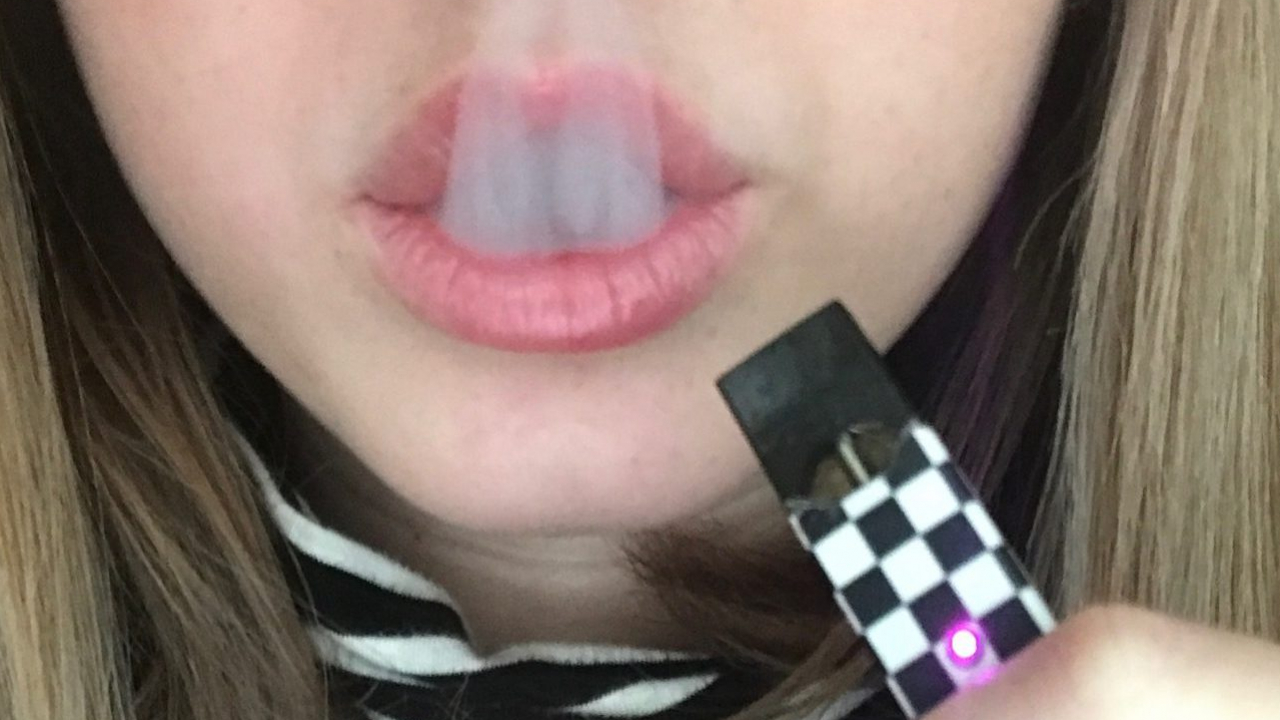
College students take part in new trends all the time – from memes to popular dance moves to viral cat videos. But not all trends are harmless. E-cigarettes, particularly the Juul, have caused a staggering increase in tobacco use among college students. The sleek and discreet packaging along with a variety of tempting flavors and widespread accessibility make the Juul a simple way for college students to consume nicotine and feel totally safe while doing it.
“I do it a lot while I’m driving, um, when I’m at my house, like, doing my homework and it’s really stressful, and then, um, like, on the weekends.”
That’s Syracuse University sophomore student Sloane Sexton. At Syracuse University, Juuling has become a pretty normalized activity. It’s not uncommon to see students Juuling at a party or even on their walk to class.
“On a college campus, even though, you know, it’s terrible, you look to your left and your right and there’s probably someone Juuling in literally, like, a study lounge.”
The Juul was created with the goal of eliminating the need for cigarettes. In fact, on the official website, it states that the mission of the Juul is to “Improve the lives of the world’s one billion adult smokers.” But are their lives really improving, or is the Juul just an opportunity in addition to the cigarette for people – especially young people – to consume nicotine?
“I believe since FDA is not rushing to regulate these devices at this point in time, they are capitalizing on children, and they’re looking to target these children in order to, I guess breed the next generation of smokers.”
That’s Plainedge New York school Superintendent Ed Salina. The Juul has reached consumers as young as middle schoolers and high schoolers, despite the fact that the legal age to purchase liquid nicotine ranges from 18 to 21 across the U-S. College students and even students younger are obsessed with this new trend, barely considering the consequences of frequently consuming nicotine.
“High school kids and middle school kids don’t even look into the fact that, like – I know that it’s bad for me, and I feel like that it’s, not fine that I do it, but at least I understand the repercussions of it. But these, like, actual children don’t understand at all what’s going on, or, like, what’s happening.”
The Juul device is compact, easy to carry around, and able to be charged with a USB port. The design itself is pretty interesting. Juul devices work by heating a pod of liquid that contains nicotine, flavorings, and other chemicals. When it’s heated, the liquid creates a vapor that consumers will inhale. Part of the appeal of the Juul is the many flavors that are offered, as tobacco cessation expert Thomas Ylioja points out.
“Some of the flavors that are being used for these products such as crème brulee, or, um, cool cucumber, those kinds of things, mango being another one. Those are the things that most users were reporting using”
Ylioja believes that this e-cigarette craze is extremely harmful to teens and could set young users up for a future addiction to nicotine.
“Nicotine can create a pretty strong addiction in teens, and that primes the brain for addiction. It increases their risk of becoming addicted to other substances later in life.”
At Syracuse University, Juuls can be purchased extremely easily. Students can buy a Juul and Juul pods on Marshall Street, which is right off campus. Students can even order a Juul right to their door with a popular delivery service called GoPuff. Health experts believe that the best way to reduce this problem is to completely remove Juuls and other e-cigarettes from the market.
“Really what we need to do is be able to remove all flavored tobacco products from the market as one way of reducing tobacco use overall.”
Until then, the Juuling trend will continue to grow. I’m Brianna Yates.
E-Cigarettes, specifically the JUUL, have gained national popularity among college students in America, but not all consumers are considering the negative health effects ‘JUULing’ can have. Click above to hear more.




